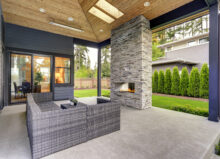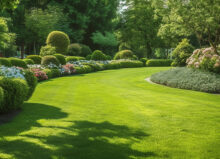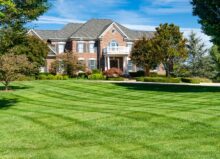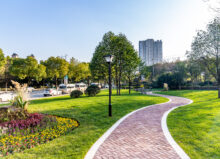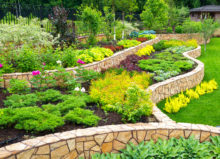Landscaping on a Slope: Transforming Challenges Into Opportunities
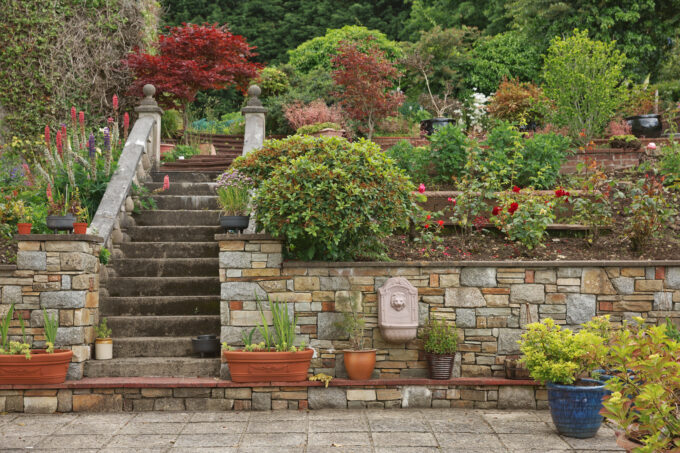
While it’s true that hills add natural character, landscaping on a slope can be a challenging endeavor. The primary issue is dealing with erosion because the gradient of the slope ensures that water will flow downward, and as the slope increases, so does the speed and power of that water. Other perplexing considerations when landscaping on a hill include choosing the best plants for the conditions and planning out design aesthetics.
If you have a sloped yard, keep reading to learn three techniques professional landscapers use to beautify hilly areas, increase their usability, stabilize the ground, control erosion, and drive up current and long-term property values.
Terracing
Terracing involves creating a series of even areas on slopes to enhance usability and aesthetics; they’re well-suited for cultivation purposes, especially when they face the southern sky.
Every terraced area offers a level space for growing crops, planting ornamentals, or incorporating other design features. Each terrace zone can also receive direct sunlight if the design is planned appropriately.
Landscaping terraces are most often used with trenching to ensure that water doesn’t build up on the flat surfaces and is directed in accordance with the overall landscaping vision. The trenches facilitate proper drainage and work to decrease the velocity of flowing water, which thereby manages erosion and helps maintain soil nutrients.
Retaining Walls
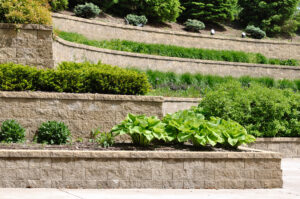
Larger retaining walls are extremely effective for steep-sloped areas of 45 degrees or more. They can be constructed from rock, brick pavers, wood, and other materials and are used to hold soil in place to prevent erosion and deposition. Again, proper drainage is essential to prevent the structure from failing over time.
Retaining walls are also especially useful for creating the perimeters of terraced zones. When properly constructed, they are aesthetically pleasing and popular for creating tiered gardens in hilly areas.
Rock Gardens
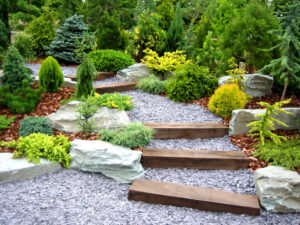
If you don’t want to create terraced zones, try building a rock or boulder garden. It’s a smart, cost-effective method for anchoring soil in place, and it allows plant life to grow and thrive without eroding.
You can position the rocks to accommodate planting pockets, similar to small terraces. You can also stack your rocks to create retaining walls that require little maintenance.
Plus, rocks and stones are good at holding in the heat from the day through the night—this helps to create microclimates that allow plants and beneficial organisms to thrive where they may not have been able to otherwise.
At first, a rock garden can seem bland, but over time, as the plants fill in the spaces between the rocks, it will appear like it was created that way by nature.
Get Help With Your Sloped Landscape
Terracing, building retaining walls, and installing rock gardens are all effective ways to beautify your property while increasing its value. If you’re a homeowner dealing with the challenges of landscaping on a slope, advice from professional landscapers like Design One can be invaluable.
Founded over 30 years ago, we’re a residential and commercial landscaping company specializing in design and hardscaping installation services. Please contact us today if you have want to learn more about our landscaping services or schedule a project consultation.

